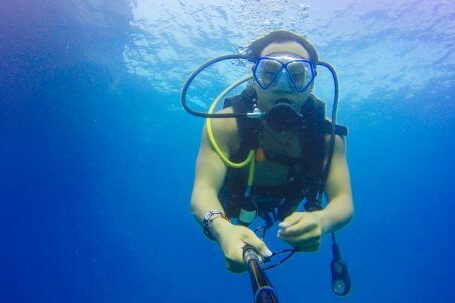Mastering the art of handling underwater currents is a vital skill for any experienced diver. These powerful forces of nature can significantly impact your diving experience, and knowing how to navigate them safely is essential. In this article, we will provide you with valuable tips and techniques to handle underwater currents like a pro, ensuring a safe and enjoyable diving adventure.
Understanding Underwater Currents
Before we delve into the techniques, it’s crucial to have a basic understanding of underwater currents. These currents are caused by various factors, including tides, wind, and temperature differences. They can vary in strength and direction, making it essential to be prepared for any situation.
1. Plan and Research
Before heading out for a dive, it’s essential to gather information about the diving site’s current conditions. Check the weather forecast, tidal charts, and consult with local divers or dive operators who are familiar with the area. This preliminary research will help you anticipate the current’s strength and direction, allowing you to plan your dive accordingly.
2. Assess the Current
Once you are underwater, take a moment to assess the current’s strength and direction. Observe the movement of the water, the behavior of marine life, and the presence of any visible indicators such as floating debris. This assessment will provide you with valuable insights and help you make informed decisions during your dive.
3. Buoyancy Control
Maintaining proper buoyancy control is paramount when dealing with underwater currents. Achieving neutral buoyancy will allow you to glide effortlessly through the water, minimizing your effort and conserving energy. Practice controlling your buoyancy before attempting dives in challenging current conditions.
4. Streamlining Techniques
To minimize the effects of underwater currents, it’s crucial to streamline your body and equipment. Keep your body in a horizontal position, with your arms and legs close to your body. Tuck in any loose equipment, such as gauges or hoses, to reduce drag and improve your maneuverability.
5. Use Your Fins
Your fins are your best ally when it comes to handling underwater currents. Utilize them effectively by using long, powerful kicks to propel yourself through the water. Avoid short, rapid kicks, as they can consume more energy without providing significant forward motion.
6. Navigation Techniques
When diving in strong currents, it’s easy to get disoriented. To maintain your bearings, use natural features such as rock formations or coral reefs as reference points. By keeping these landmarks in sight, you can navigate more effectively and prevent getting swept away by the current.
7. Buddy System
Diving with a buddy is always recommended, but it becomes even more crucial when dealing with challenging current conditions. Stay close to your buddy and maintain visual contact throughout the dive. In case of an emergency, your buddy can provide assistance and help you navigate the current safely.
8. Know When to Ascend
In some situations, the current might become too strong or unpredictable to handle safely. In such cases, it’s essential to know when to call off the dive and ascend to a shallower depth. Your safety should always be the top priority, and it’s better to abort the dive than risk getting caught in a dangerous situation.
In conclusion, handling underwater currents like a pro requires careful planning, proper technique, and experience. By understanding the currents, assessing their strength, and utilizing effective techniques such as buoyancy control and streamlined body position, you can navigate these forces of nature safely and enjoy your underwater adventure to the fullest. Remember to research the diving site, dive with a buddy, and always prioritize your safety. With practice and patience, you’ll become a master at handling underwater currents, enhancing your diving skills and experiences.





